A Step-by-Step Guide to Launching a Trendy New Clothing Brand
03/11/2025
Branding
Launching a trendy clothing brand takes more than great designs—this guide walks you through the essentials to turn your vision into a must-have label.

Are you trying to launch your own fashion label or clothing business? Are you unsure of how to get started and create a successful brand that stands apart from the crowd? Well, here is an all-inclusive guide on starting and building your very own clothing company. We will dive into strategies for entering the apparel market as well as unique tactics tailored towards creating a distinct identity within the industry. Additionally, we'll discuss developing a strong corporate persona that resonates with consumers in order to guarantee success in this dynamic trade.
.png)


Market Research for a New Clothing Brand

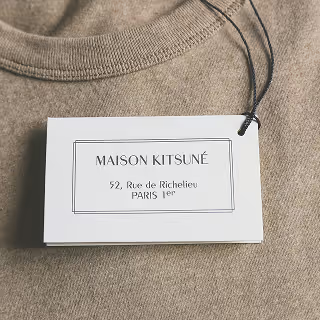

When launching a new fashion brand, conducting detailed market research is not just a preliminary step; it's a foundational strategy that significantly impacts every aspect of your business and brand development.
Here's how in-depth market research can be utilized to shape various strategies for your fashion brand:
- Brand Strategy Development:
- Impact: Understanding market trends, consumer preferences, and competitor strategies allows you to carve out a unique identity for your brand. It informs the story you tell, the values you champion, and the image you project.
- Application: Use your research to define your brand's personality, ethos, and unique selling propositions (USPs). For instance, if research indicates a growing demand for sustainable fashion, your brand could focus on eco-friendly practices and materials, shaping your brand around environmental consciousness.
- Positioning Strategy:
- Impact: Effective market research helps in identifying gaps in the market, allowing you to position your brand in a niche that may be underserved.
- Application: Analyze consumer behavior and competitor offerings to find your 'sweet spot' in the market. For example, if there's a lack of affordable luxury in the market, position your brand to fill this gap, targeting consumers seeking luxury at a more accessible price point.
- Pricing Strategy:
- Impact: Market research provides insights into the spending habits and price sensitivity of your target audience, which is crucial for setting the right price points.
- Application: Use data on consumer spending patterns and competitor pricing to determine your pricing strategy. Should you go for premium pricing, competitive pricing, or value-based pricing? This decision will be guided by your market research findings.
- Product Strategy:
- Impact: Understanding current trends and consumer needs helps in developing products that are both relevant and desirable.
- Application: Tailor your product line to meet the identified needs and preferences of your target market. This could involve focusing on specific styles, materials, or even technology integration in clothing, depending on your research.
- Additional Research Types:
- Consumer Surveys and Focus Groups: Gain direct feedback from potential customers about their preferences and expectations.
- Competitive Analysis: Deep dive into competitors’ strengths and weaknesses to identify opportunities for differentiation.
- Trend Analysis: Stay ahead by analyzing fashion trend predictions from industry experts and trend forecasting agencies.
- Social Media and Online Behavior Analysis: Understand the digital footprint and online behavior of your target demographic.
- Ethnographic Research: Immerse in the lifestyle and culture of your target audience for deeper insights.
- Other Considerations:
- Regulatory and Ethical Research: Stay informed about industry regulations, ethical practices, and sustainability concerns.
- Supply Chain Analysis: Research the best practices for sourcing materials and manufacturing to optimize cost and efficiency while maintaining quality.
In conclusion, comprehensive market research is the cornerstone of developing a successful fashion brand. It informs and shapes your brand, positioning, pricing, and product strategies, ensuring that every decision you make is data-driven and aligned with market demands and consumer expectations. By continuously engaging in various types of research, you can keep your brand relevant, competitive, and in tune with the evolving fashion landscape.
Branding Strategy for a New Fashionable Clothing Brand
Crafting a robust branding strategy is crucial for the success and distinctiveness of a new fashion label. This strategy should encompass various elements that collectively establish a strong brand identity, resonate with your target audience, and differentiate your brand in the competitive fashion industry.
- Brand Mission and Values Communication:
- Impact: Your brand's mission and values are the core of its identity. They not only define what your brand stands for but also help in connecting with your audience on a deeper level.
- Application: Articulate your brand's mission and values clearly in all communications. Whether it's a commitment to sustainability, innovation in design, or championing inclusivity, these should be consistently reflected across all platforms and interactions. This alignment helps in building a loyal customer base that shares and supports your brand's values.
- Development of a Unique Visual Identity:
- Impact: A unique visual identity makes your brand instantly recognizable and helps it stand out in a crowded market.
- Application: Create a distinctive visual language for your brand. This includes a memorable logo, a cohesive color palette, and typography that aligns with your brand's personality. For example, a luxury brand might opt for a minimalist logo and a sophisticated, neutral color scheme, while a more youthful, vibrant brand might choose bright colors and bold fonts.
- Emotional and Intellectual Brand Connection:
- Impact: Brands that connect with customers on an emotional and intellectual level are more likely to foster loyalty and advocacy.
- Application: Develop messaging and brand storytelling that resonates with your target audience's values and aspirations. Use narratives that not only inform but also evoke emotions. This could be through impactful advertising campaigns, engaging social media content, or community-building initiatives.
- Creating a Memorable Tagline and Brand Messaging:
- Impact: A catchy tagline and consistent brand messaging can significantly enhance brand recall and recognition.
- Application: Craft a tagline that encapsulates the essence of your brand in a few memorable words. Ensure that all your brand messaging, from advertising copy to product descriptions, aligns with this tagline and the overall brand tone. This consistency in messaging reinforces your brand identity across various touchpoints.
- Additional Strategies:
- Brand Storytelling: Use storytelling to share the journey, inspiration, and ethos behind your brand. This builds a narrative that customers can connect with.
- Digital Presence: Establish a strong digital presence through a well-designed website and active social media engagement, tailored to reflect your brand's identity.
- Customer Experience: Ensure that every aspect of the customer experience, from browsing to purchasing and post-purchase service, aligns with your brand values and identity.
- Consistency Across All Platforms:
- Impact: Consistency in branding across all platforms and touchpoints builds trust and recognition.
- Application: Ensure that your visual identity, messaging, and brand experience are consistent whether a customer interacts with your brand online, in-store, or through advertising.
Sales & Distribution Channels for Fashion Brands
Once you've pinpointed your fashion brand's target demographic and crafted a compelling branding strategy, the crucial next phase is strategizing how to efficiently deliver your products to your customers.
This crucial step involves the careful selection and setup of sales and distribution channels that resonate with and are accessible to your intended market. It's not just about choosing channels, but tailoring them to fit the unique preferences and behaviors of your audience.
Consider a diverse range of options:
- Online Stores: Establish a strong online presence through an e-commerce platform, ensuring it's user-friendly and reflective of your brand's image.
- Physical Retail Outlets: Explore opening your own stores or securing shelf space in existing retail stores. This can provide a tangible brand experience for your customers.
- Pop-Up Shops: Utilize temporary pop-up shops in strategic locations. These can create buzz, offer a unique shopping experience, and test new markets with minimal risk.
- Collaborations with Other Brands: Partner with complementary brands to tap into their customer base and expand your reach. This can be through joint ventures, shared spaces, or co-branded products.
- Influencer Partnerships: Engage with influencers who align with your brand values and have a significant following in your target market. They can act as brand ambassadors, creating authentic content that showcases your products and drives sales.
Additionally, it's important to continuously analyze the performance of your sales channels. Track metrics like sales volume, customer feedback, and engagement rates to understand what's working and what needs adjustment. This data-driven approach ensures that your sales and distribution strategies remain effective and responsive to market changes and consumer preferences.
Marketing & Advertising for Clothing Brands
The success of your fashion brand hinges not just on its creativity and uniqueness, but significantly on public awareness and recognition. In today's competitive market, visibility is key. To achieve this, allocating resources effectively towards marketing and advertising is essential to establish your brand's presence and draw in new customers.
- Digital Marketing Campaigns:
- Email Marketing: Utilize email campaigns to directly reach your audience. Statistics show that email marketing can offer an ROI of up to $42 for every $1 spent, making it a highly effective tool.
- Social Media Engagement: Engage with your audience through social media platforms. For instance, Instagram, with over 1 billion monthly active users, is a goldmine for fashion brands. Running contests, interactive polls, and user-generated content campaigns can significantly boost engagement.
- Influencer Collaborations: Partner with influencers whose followers align with your target demographic. Influencer marketing is reported to generate 11 times higher ROI than traditional forms of digital marketing.
- Collaborations and Cross-Promotions:
- Collaborate with other brands or artists to reach wider audiences. These partnerships can lead to creative cross-promotional campaigns, tapping into each brand's unique audience.
- Traditional Advertising Methods:
- Billboards and Outdoor Advertising: Despite the digital age, outdoor advertising remains impactful. For instance, a Nielsen study found that 58% of consumers visited a restaurant or store after seeing an outdoor ad.
- Magazine Ads: Fashion magazines still hold sway in influencing trends and consumer behavior. Ads in well-known magazines can target specific demographics and create a high-end brand image.
- Radio Advertising: Radio reaches millions daily and can be a cost-effective way to target local markets. According to Nielsen, radio advertising has a 6-to-1 return on investment potential.
Remember, the key to successful marketing and advertising lies in a balanced approach that combines both digital and traditional methods. Tailor your strategies to align with your brand identity and target audience, and continuously monitor and adjust based on performance metrics and consumer feedback. This dynamic approach ensures that your brand not only captures attention but also sustains interest and grows its customer base.
Starting your own clothing line or fashion brand



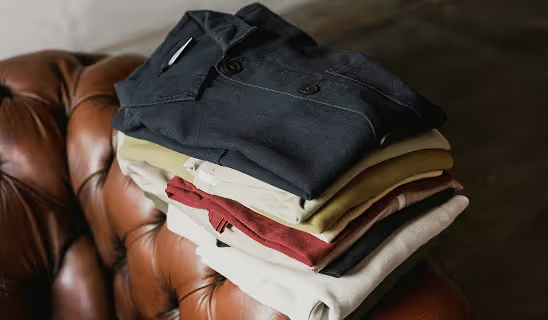








Building a successful fashion or clothing business requires more than just creating unique clothes. Becoming a household name in the fashion industry involves knowing how to market yourself, how to position your brand in the industry, and how to differentiate yourself from the competition.
In this section, we’ll look at choosing a name for your startup based on the manufacturing process of the clothing line and consumer needs. We’ll review how brand positioning can be used to differentiate yourself from other fashion brands and how your brand story, personality, and voice can help build a community around the business.
By the end of this section, you’ll have a clear understanding of how to start a fashion or clothing brand.
Market Research
Market research is an indispensable component in the establishment of a clothing line or brand.
It encompasses a thorough investigation into several key areas:
- Industry Overview: Gain an understanding of the clothing industry's current practices, especially in your region. This includes insights into local manufacturing processes, pricing strategies, and popular clothing types, ensuring your products align with market trends and price expectations.
- Consumer Needs Assessment: Focus on identifying what your target market seeks in clothing. This involves understanding their preferences, budget constraints, and lifestyle requirements. Such research is crucial for designing apparel that not only meets consumer demands but also distinguishes your brand from competitors.
This foundational market research sets the stage for the next crucial step: creating detailed buyer personas.
Build Buyer Personas
Buyer personas are essential when starting a clothing line or fashion brand. Based on market research and real information about your current customers, a persona represents a distinct segment of your audience. Many marketers even give their personas name and a physical appearance as part of the audience representation. Using a persona can provide you with insights into how to best target and communicate with potential customers.
When building buyer personas for a fashion brand, you should focus on the following elements:
- Demographics: How old are your potential customers? Where do they live? How much money do they have to spend?
- Motivations and goals: What is motivating them to buy fashion items from you?
- Behaviors: How often do they shop for clothing online or in-store? Challenges: What challenges are they facing when shopping for clothing items?
- Preferred channels: How do they prefer to receive information about your brand and product offerings?
By developing a clear understanding of each persona and audience segment, you can create a personalized approach for how to reach them. This will help you target the right people, with the right message, at the right time.
You can use tools such as Google Analytics and social media platform data to get a better understanding of how people are interacting with your website and how you can target them more effectively in the future. You can also talk to them and give them surveys to learn more about their preferences, motivations, and problems.
By developing buyer personas for your fashion brand, you can better target potential customers and tell a brand story that sticks with them. This will help you build a successful clothing business in the long term.
Competitor Research and Brand Positioning
Competitor research and brand positioning are essential for a successful fashion or clothing business.
Knowing how your competitors are positioning themselves in the industry, how they market their products, and how to differentiate yourself from them is key to staying ahead of the competition.
Key Reminders: Competitor Research and Brand Positioning in Fashion Business
- Essentiality of Competitor Research and Brand Positioning: Crucial for the success of any fashion or clothing business.
- Understanding Competitor Positioning: Know how competitors position themselves in the industry and market their products.
- Differentiation Strategy: Identify ways to set your brand apart from competitors to gain a competitive edge.
- Importance for Established Brands: Helps in staying updated with industry trends and refining marketing strategies to better target the ideal customer base.
- Guidance for New Brands: Assists in understanding market differentiation. Analyze established brands' positioning and customer targeting to develop a unique brand position.
- Brand Story and Personality Development: Focus on creating a unique brand story and personality that resonates with the target audience, aiding in community building and customer attraction.
- Long-term Brand Building: Developing a strong brand voice and personality is key to building a lasting community and attracting more customers.
- Strategic Planning: Use competitor insights to inform strategic decisions, ensuring your clothing line is well-positioned and distinctive in the fashion world.
Customer Interviews and Surveys
Primary Research Methodology: Direct Customer Engagement for Clothing Line Success
Implementing a primary research strategy through direct engagement with your target audience is a powerful approach to gather essential insights for your clothing line.
This methodology involves:
- Gaining Direct Customer Insights: Engaging in conversations with potential customers is invaluable for understanding their perspectives on fashion. This interaction provides a deeper comprehension of how individuals perceive clothing and the role it plays in their daily lives.
- Product and Service Refinement: Direct feedback from these discussions helps identify key features and preferences of your target market. Understanding what aspects of clothing are most important to them enables you to tailor your products or services more effectively to meet their needs.
- Enhancing Marketing Strategies: Learning about how customers use and view your products can significantly inform your marketing approach. This knowledge allows you to craft marketing messages that resonate more strongly with your audience, potentially boosting long-term sales.
- Target Market Engagement: These conversations are a goldmine for insights on how to better target your audience. They provide clarity on what appeals to your potential customers and how to align your clothing line with their expectations and lifestyles.
- Product Development and Industry Positioning: Investing time in this primary research equips you with the necessary information to develop products or services that truly resonate with your ideal customers. It also aids in strategically positioning your brand within the competitive fashion industry.
In summary, direct engagement with your target audience as a primary research method is a strategic investment. It not only aids in refining your product and marketing strategies but also provides a clear direction for creating a clothing line that aligns with customer needs and industry trends
Create a Profitable Business Model
Creating a profitable business model for your clothing line is essential for long-term success. Knowing how to control costs and how to price products so that you can make a profit is key to keeping your business profitable.
Develop a Business Plan
Creating a business plan for your clothing brand not only helps keep you on track but demonstrates your commitment to potential investors. The plan should include an in-depth market analysis, pricing strategy, promotions and marketing plans, financial projections, and operational procedures.
When beginning to develop your business plan, keep in mind that a clothing line involves more than just designing clothes; it requires a deep understanding of how the fashion industry works as well as how to manage a business. A well-thought-out business plan will organize and define how you are going to start your own clothing line, how you will manage the business and market it, and how you will make it profitable.
Start by researching the current market conditions and trends in the fashion industry. Learn about competitors, target audiences, how they shop, and what they’re looking for in a clothing line. Then create a unique brand position to differentiate yourself from the competition.
When outlining how you will run your business, consider how you will source materials and manufacturers, how you will market and distribute your products, and how you will manage customer service. Consider how much capital is required to start a clothing line, how you will generate revenue, and how you can effectively manage costs.
Set your Target Price Point
Setting a target price point for your clothing line is integral to financial projections as well as marketing. Knowing how to price your products so that you can make a profit while still providing value to customers will help you create a profitable business model in the long term.
When setting your price point, consider how much it costs to produce the product, how much you need to cover your basic costs of doing business, and how much you want to make a profit. Consider how much customers are willing to pay and how that affects how you can position your clothing line in the marketplace. By taking all these factors into consideration, you can find a price point that’s profitable for you and attractive to customers. If you’re targeting a higher price point, consider how you can add value with product features, design, or customer service.
By considering how much it costs to produce the product, how much customers are willing to pay, how you can position yourself in the marketplace, and how much profit you want to make, you can set a target price point that’s profitable for both you and your customers.
Choose the Right Business Model
Choosing the right business model includes determining how you will structure your business, how you’ll handle production and distribution, and how you will market your product can help you find a successful path forward.
You may choose to produce and distribute products yourself or outsource these processes. Consider how much control you want to have over how your products are made and how much time it will take to manage production and distribution.
You may also choose to use a dropshipping model if you don’t want to handle the production and distribution process yourself. In this case, you’ll need to find a reliable partner who can handle production and distribution for you.
By understanding how to structure your own business, how you’ll handle production and distribution, and how you will market your product, you can choose the right business model for your clothing line.
Selecting sales channels
Selecting the right sales channels for your clothing line is essential for success. Knowing how to reach customers effectively, how you’ll handle production and distribution, and how you will market your product can help you find a successful path forward.
You may choose to sell products online through an online store, such as Etsy or Shopify. Alternatively, you could use a print-on-demand model to offer custom clothing that doesn’t require you to manage inventory or production. You may also choose to sell wholesale to retail stores and leverage their customer base. If you want more control over how your products are presented, an e-commerce platform may be a better fit for your business.
By understanding how to structure your own business, how you’ll handle production and distribution, how you will market your product, and how best to reach your target customers, you can select the most profitable sales channels for a successful fashion brand.
Ultimately, how you structure your business, how you manage production and distribution, how you market your product, how you reach customers, and how you price your products will determine how successful your clothing line is. By taking the time to strategically plan a path forward, you can create a thriving fashion brand that stands out from the competition.
Manufacturing your Clothing line
If you’re looking to start your own clothing brand, the manufacturing process is an important step. Manufacturing clothing and apparel products are complex and require a high level of attention to detail. From selecting a clothing manufacturer, designing your product, and managing production and distribution, many steps need to be taken in order for you to create a successful fashion line.
Every Thread, Button, and Pattern Tells a Story
Finding the best materials that suit your clothing and apparel products is one of the most important steps in the manufacturing process. Quality materials and construction are essential for creating a successful clothing line.
Create Designs for Your Clothing Line
Designing clothing that appeals to your target market is crucial for success. Make sure to include a variety of designs and styles that cater to different tastes and styles. Keep up with the latest fashion trends, but also consider how your designs will stand out from other brands in the industry.
Research on Material Costs, Qualities, and Manufacturing Methods
Before you start manufacturing, research the different types of materials available and how they impact the cost, quality, and production time. This will help you choose the best option for your clothing line while keeping costs low.
Find a Manufacturing Partner
Once you have done your research on material costs, qualities, and manufacturing methods, it is time to find a clothing manufacturer that best suits your needs. It can be difficult to source a good clothing manufacturer, but with the right research and resources, you can find one that meets all of your requirements. Consider, too, using online resources like Alibaba or Global Sources.
When selecting a clothing manufacturer, consider their capabilities, how much they will charge, and how long it will take to produce the items. Make sure to ask for samples of work before making any commitments. With the right manufacturing partner, you can bring your fashion dreams to life!
Stay Ahead of the Competition
The fashion industry is constantly changing, so it is important to stay ahead of your competitors by researching trends, monitoring their strategies, and creating innovative products that keep customers engaged. Keep up with the latest technology to ensure that you remain relevant in a dynamic market.
Want to learn more about brand platforms, Brand Strategy and Brand Identity? Keep reading!
If you need help with your companies brand strategy and identity, contact us for a free custom quote.
Building a clothing brand
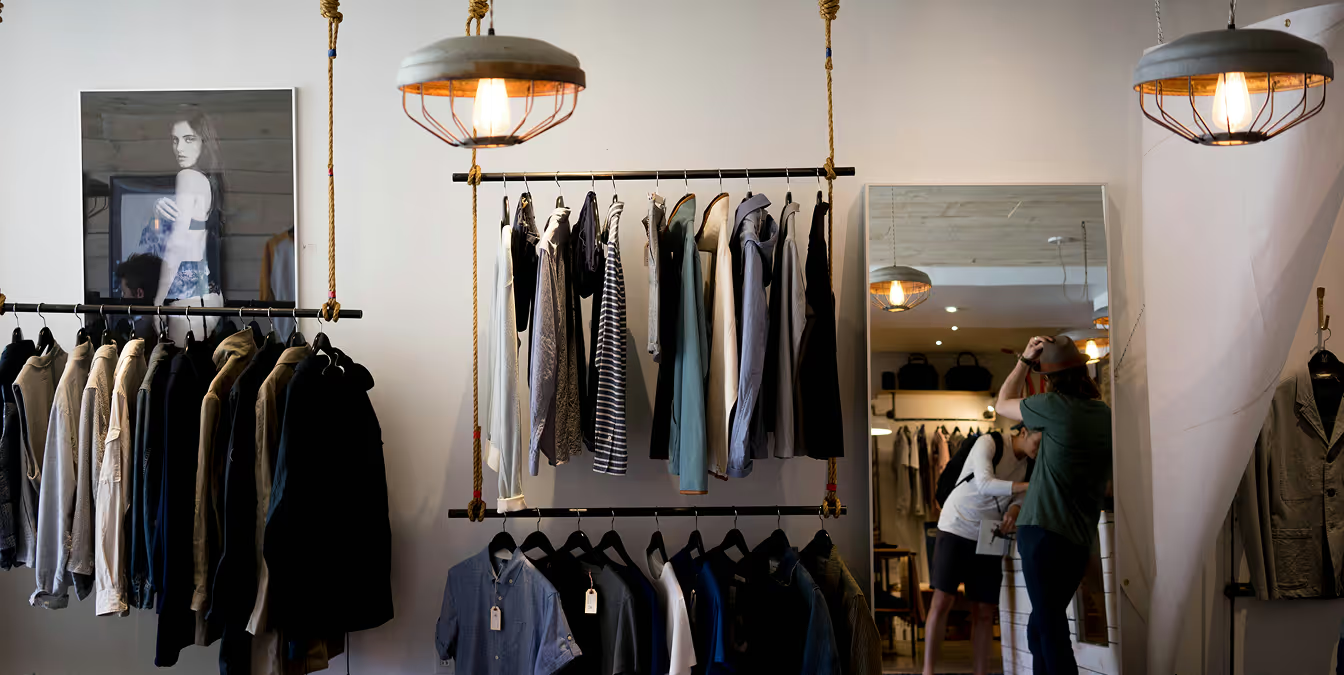
Creating a successful clothing brand is no easy task, but with the right strategies and dedication, it can be done. Building a clothing brand requires careful planning and a clear understanding of the fashion industry. From choosing a name for your business to creating unique designs that appeal to your target audience, there are many steps involved in launching a successful clothing line.
Choosing a name for your clothing line
The name you choose for your clothing brand should be unique and memorable while remaining clear and easy for your audience to remember. Spend time researching ideas, exploring keywords, and brainstorming names with friends and stakeholders. Make sure to check if the desired name is available legally and register it with a trademark lawyer.
In addition, check domain registrars to see if an intuitive web address is available. The URL should be very similar to the brand name as that is what most of your audience will be searching for. Look to social media platforms, as well, to confirm the handles are available.
Strong Story and Brand Identity
The first step in branding your clothing line is to craft a strong story and brand identity. Your story should reflect your values and mission and explain how you plan to stand out from the competition. Developing a unique look and feel will help customers easily recognize your products.
Defining Your Brand's Voice
Developing a unique brand voice and personality will help customers connect with your clothing line. Consider the personality of your brand, as well as the tone and vocabulary your brand will use. It is important also to consider how your brand should appear in different media outlets such as social media or websites.
Design Logo and Packaging
Creating a professional logo and packaging will help customers recognize your clothing brand. Spend time researching how to create a memorable logo and how to design the perfect packaging for your items. Consider how the logo and packaging can be used in different marketing campaigns or how they could be used on social media platforms.
Developing Brand Loyalty and Brand Equity
Once your clothing brand is established, your focus will be on how to develop brand loyalty in your customers and build equity. Utilize strategies such as customer rewards or limited edition items that will help customers keep coming back for more. Developing brand loyalty and equity will ensure a growing and loyal customer base for your clothing line.
Marketing Strategies for Amplifying Your Clothing Brand
Marketing your clothing brand is key to success. Here are some strategies fashion designers can use to amplify and market their clothing brand:
Social Media Marketing
Social media is an essential tool for clothing brands to amplify their brand and reach a wider audience. With platforms such as Instagram, Twitter, Facebook, TikTok, and YouTube, clothing brands can easily connect with people globally in a cost-effective way.
To start off, create interesting visuals that capture the essence of your clothing line. Utilize images to showcase how your clothing looks on different people, how it can be styled in various ways, and how customers should care for the items. Post regularly and experiment with content such as video stories or product reviews.
Additionally, make sure to interact with customers by responding to comments, answering questions, and hosting giveaways. This will not only help with creating a sense of community, but will also increase customer loyalty.
Finally, consider how influencers can help with amplifying your clothing brand, particularly on Instagram and YouTube. Research how to find the right ones that can help introduce your product to their followers. This is a great way to gain more visibility and reach potential customers who might be interested in your clothing.
Ads & Promotions
Ads and promotions are a great way for clothing brands to amplify their brand and reach potential customers. Ads can be used across various platforms, such as social media and websites, as well as traditional formats like radio or television. When creating an ad campaign, focus on a singular action you want your target audience to take and how best you can encourage them to do so.
It is important also to consider how different ads and promotions should appear on different mediums and platforms. For example, an ad campaign for a clothing brand on Instagram should be more visually driven than a campaign on a website. Additionally, you can use A/B testing to compare how different campaigns are performing before investing all of your resources into one type of ad or promotion.
To ensure that your clothing brand stands out, use creative visuals and copywriting to attract potential customers. Utilize the power of storytelling and how it can help capture a customer's attention. Finally, consider how you can measure success by tracking how many people are viewing your campaign and how many conversions have been made. Tracking how customers interact with your ads and promotions will help you understand how they are responding to your clothing line.
Email Marketing
Email marketing is a powerful tool for clothing brands to amplify their brand and reach potential customers. Email campaigns can be used to communicate with current customers, inform people about promotions or discounts, announce the launch of new collections, and more.
To start off, create an email list that includes your current customers and potential ones. Reach out to them with personalized emails that will capture their attention and inform them about how your clothing line can benefit them. Utilize visuals such as videos, images, and GIFs to make sure that the content is engaging. Additionally, create a sense of urgency by offering discounts or limited-time promotions that customers cannot miss out on.
Additionally, use email marketing to create a sense of community with customers by hosting contests and giveaways. This will not only help with creating customer loyalty, but it can also encourage customers to make repeat purchases.
To ensure that your emails are interesting and engaging, customize them for different customer segments and personas. Additionally, consider how you can personalize the emails to make them feel more intimate. For example, you can include a customer's name as well as their purchase history in the email.
Finally, track how successful your email campaigns are by analyzing how many people are opening the emails and how many customers are taking action after reading them. This will help you understand how your customers are responding to the emails and how you can improve them in the future.
Search Engine Optimization
Search Engine Optimization (SEO) is an essential tool for clothing brands to amplify their brand and reach potential customers. SEO involves optimizing how a website and web content appear in search engine results pages (SERPs). Effectively optimized pages will help the clothing brand to appear higher in rankings when users search for relevant keywords. This means that your content will have a better chance of being seen by potential customers and can drive more traffic to their website.
For clothing brands, SEO should focus on optimizing how the brand is perceived by search engines through keyword research, content optimization, link building, and technical optimization.
Keyword Research: When it comes to clothing brands, keywords should be relevant to what the brand is offering. This could include words like “clothing,” “fashion,” and “apparel,” as well as specific keywords related to the clothing lines. For example, a clothing brand that specializes in activewear may use keyword phrases such as "athleisure" or "fitness apparel."
Tracking how users are searching and how they interact with your brand can help you refine your keyword strategy to ensure that potential customers can find what they’re looking for.
Content Optimization: Content optimization involves optimizing how website content appears in SERPs by using keywords effectively and providing relevant information about clothing brands. This includes creating meta titles, descriptions, and headings that are both informative and include relevant keywords, as well as optimizing how images appear in SERPs.
Link Building: Link building is an important part of SEO because it helps search engines determine how reputable a website is. Clothing brands should focus on link building by creating relationships with other websites, such as fashion bloggers or influencers, and creating content that other websites would be interested in linking to.
Technical Optimization: Technical optimization involves optimizing how a website is coded, which can help clothing brands to ensure that the website is loading quickly and functioning properly across all devices. Additionally, making sure that your website has an up-to-date sitemap and robots.txt file will help search engine crawlers to find and read your website more effectively.
By optimizing how clothing brands appear in SERPs, they will be able to drive more traffic to their website and build a stronger presence for their brand. Utilizing SEO is an essential part of amplifying clothing brands, particularly if they are just starting out. By focusing on keyword research, content optimization, link building, and technical optimization, clothing brands can ensure that they are giving potential customers the best experience possible.
Content Marketing
Content marketing is an essential tool for clothing brands to reach and engage their target audience. Content marketing involves creating content that resonates with your target customers and amplifies the brand’s message in a meaningful way. This can include blog posts, how-to guides, videos, podcasts, ebooks, infographics, and more.
Content marketing will allow clothing brands to go beyond traditional advertising and connect with their customers in a more personal way. By creating content that educates, entertains, and informs potential customers, clothing brands can build a community around the brand and reach a larger audience.
Content marketing is also an effective tool for SEO because it helps clothing brands to build backlinks and increase website traffic. As content is shared across social media, it will help clothing brands to gain more visibility and reach a wider audience. Additionally, content marketing can help clothing brands to establish themselves as an authority in the fashion industry by creating content that provides valuable information about the brand’s products and services.
Overall, content marketing can be a powerful tool for clothing brands to reach and engage their target audience. By creating content that resonates with potential customers and builds a community around the brand, clothing brands can amplify their message and reach a larger audience.
Design for Fashion Seasons
Fashion is constantly changing, so clothing brands need to create designs that will keep up with the trends for each fashion season. This can be a challenge when starting out because you won’t have the resources of larger fashion companies, but there are ways to make sure your designs remain on trend.
Understanding how patterns, colours, and silhouettes change with each season will help clothing brands create collections that appeal to their target audience. Additionally, looking at how other fashion designers are responding to trends and how they’re communicating them in a unique way can provide inspiration for how to create on-trend designs.
Finally, creating a design calendar can help clothing brands stay organized and plan ahead. This will ensure that they’re releasing new styles and products in a timely manner and can help them to stay on top of fashion trends as they change over time.
Participate in Fashion Events
Participating in events such as fashion shows, trade shows, and pop-up shops can help clothing brands to reach a larger audience. Not only will it give them an opportunity to showcase their designs, but it will also provide a chance for them to network with other industry professionals and build relationships with potential customers.
Additionally, attending fashion events can help clothing brands to stay up to date on the latest trends and spot any new opportunities that could be beneficial for their business. Participating in fashion events can also help them to measure how their designs are being received by the public and gain valuable insights into how they can improve their product offerings.
Overall, attending fashion events is an important part of building a clothing brand. Not only does it allow them to showcase their designs, but it also provides an opportunity for them to network and gain valuable insights into how their products are being received. It’s an effective way for clothing brands to reach a larger audience and increase their visibility in the fashion industry.
Connect with Influencers
Influencer marketing is becoming increasingly popular in the fashion industry as clothing brands partner with influencers to help them reach a larger audience and gain more visibility in the market. Influencers can be a great asset for clothing brands because they have an engaged following and can create content that resonates with potential customers.
When partnering with influencers, clothing brands need to make sure that the influencer's content aligns with their brand values and mission. Additionally, they should look for influencers who have a strong presence in the fashion industry and understand how to create content that resonates with potential customers.
Overall, partnering with influencers can be a powerful tool for clothing brands looking to gain visibility and reach a larger audience. By choosing influencers whose values align with the brand’s mission, clothing brands can leverage their following to create content that resonates with potential customers and increase their visibility in the fashion industry.
Analyze Customer Data
Analyzing customer data is a great way for clothing brands to gain insights into how their products are being received and how they can improve them. Customer data is valuable because it can provide insights into how customers are interacting with the brand’s product offerings, what their preferences are and how they can be better served.
By analyzing customer data, clothing brands can identify how their products are performing, what styles and trends customers are responding to, and how they can make improvements. Additionally, customer data can help them to create more targeted marketing campaigns that focus on the specific needs and interests of their target audience.
Overall, analyzing customer data is a great way for clothing brands to gain valuable insights into how their products are being received and how they can improve them. By using customer data to inform their product offerings, clothing brands can create a better customer experience and increase their visibility in the fashion industry.
Craft a Sales Strategy
Developing a sales strategy is an important step for clothing brands looking to increase their visibility in the fashion industry. A sales strategy should be tailored to the brand’s product offerings and target audience and should include how they will promote their products and how they will measure success.
When creating a sales strategy, clothing brands should consider how they can reach their target audience and how they can create content that resonates with them. Additionally, they should look at ways to differentiate themselves from their competitors and how they can measure the success of their sales efforts.
Overall, crafting a sales strategy is an important step for clothing brands looking to increase their visibility in the fashion industry. By developing a strategy that is tailored to their product offerings and target audience, clothing brands can create content that resonates with potential customers and stand out from their competitors.
Conclusion

Creating a successful clothing brand requires a thoughtful and strategic approach.
It involves choosing the right name, creating audience personas, crafting a unique brand story, building a recognizable brand personality, and developing a sales strategy that resonates with potential customers.
The Branded Agency can help clothing brands build a successful brand by providing expert advice on how to create a recognizable name and how craft a brand story that resonates with their target audience.
Additionally, we can help clothing brands differentiate themselves from competitors and develop a sales strategy that will increase their visibility in the fashion industry.
If you’re interested in how The Branded Agency can help your clothing brand stand out in the fashion industry, contact us today for a free consultation.
We look forward to helping you create a successful fashion brand!

Sloane Avery
As entrepreneurs, they’ve built and scaled their own ventures from zero to millions. They’ve been in the trenches, navigating the chaos of high-growth phases, making the hard calls, and learning firsthand what actually moves the needle. That’s what makes us different—we don’t just “consult,” we know what it takes because we’ve done it ourselves.
Want to learn more about brand platform?
If you need help with your companies brand strategy and identity, contact us for a free custom quote.
We do great work. And get great results.
+2.3xIncrease in revenue YoY
+126%Increase in repurchase rate YoY

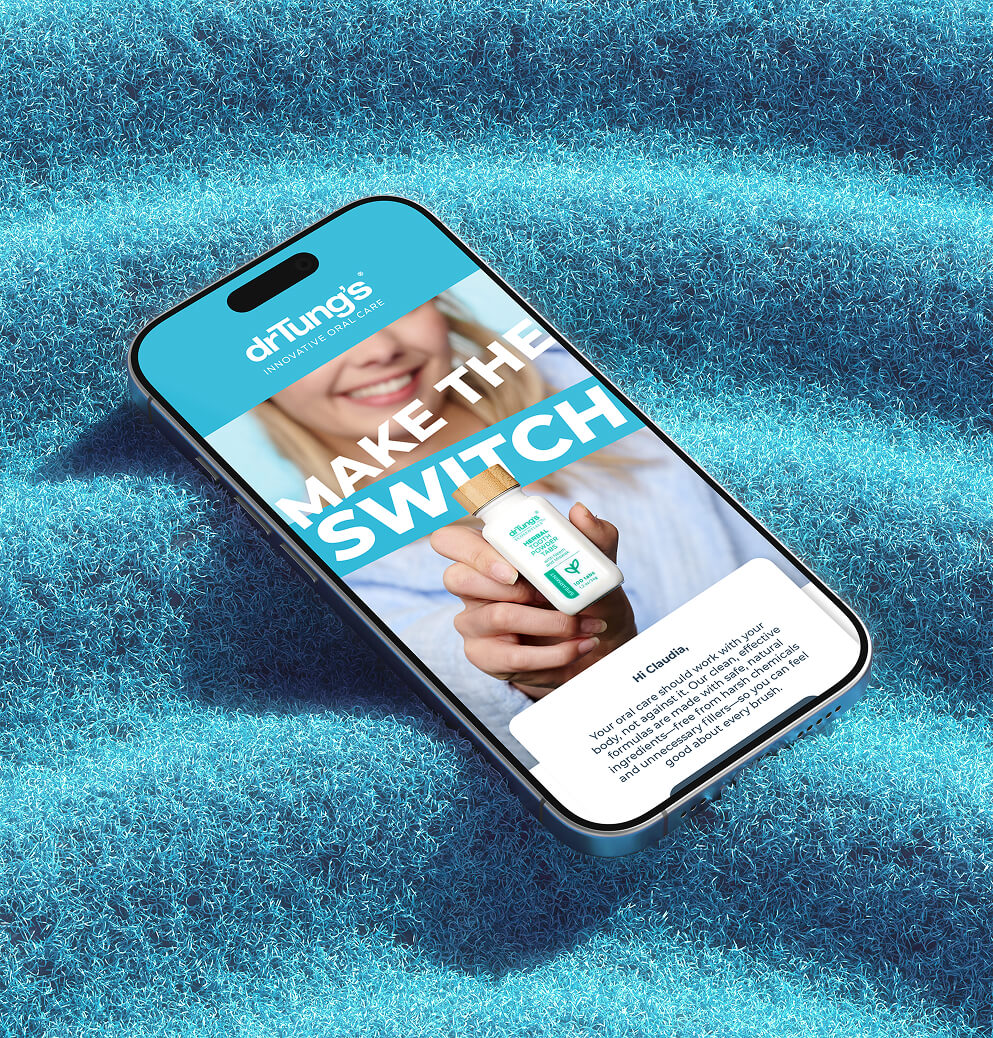

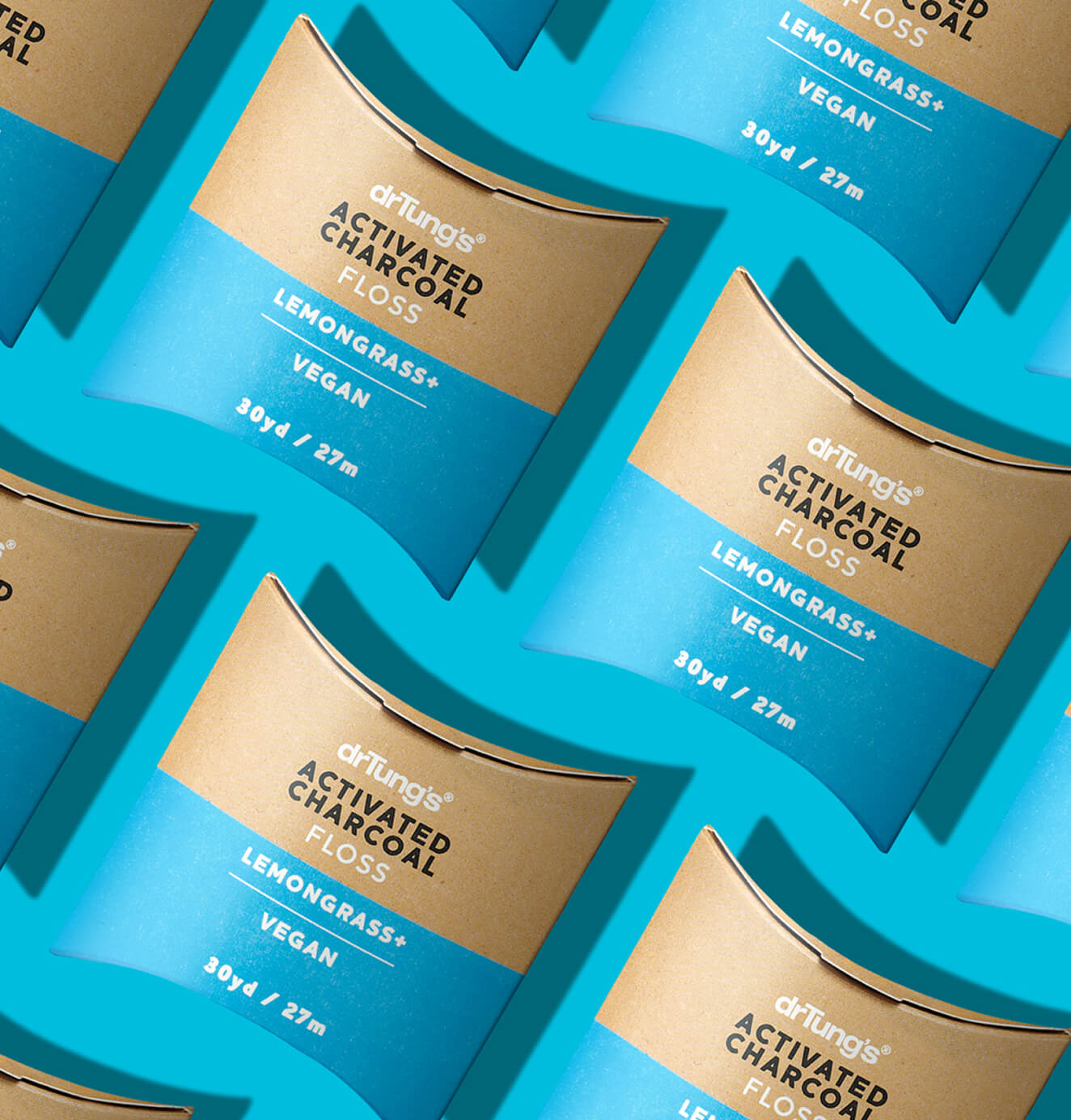




+93%Revenue growth in first 90 days
+144% Increase in attributed revenue


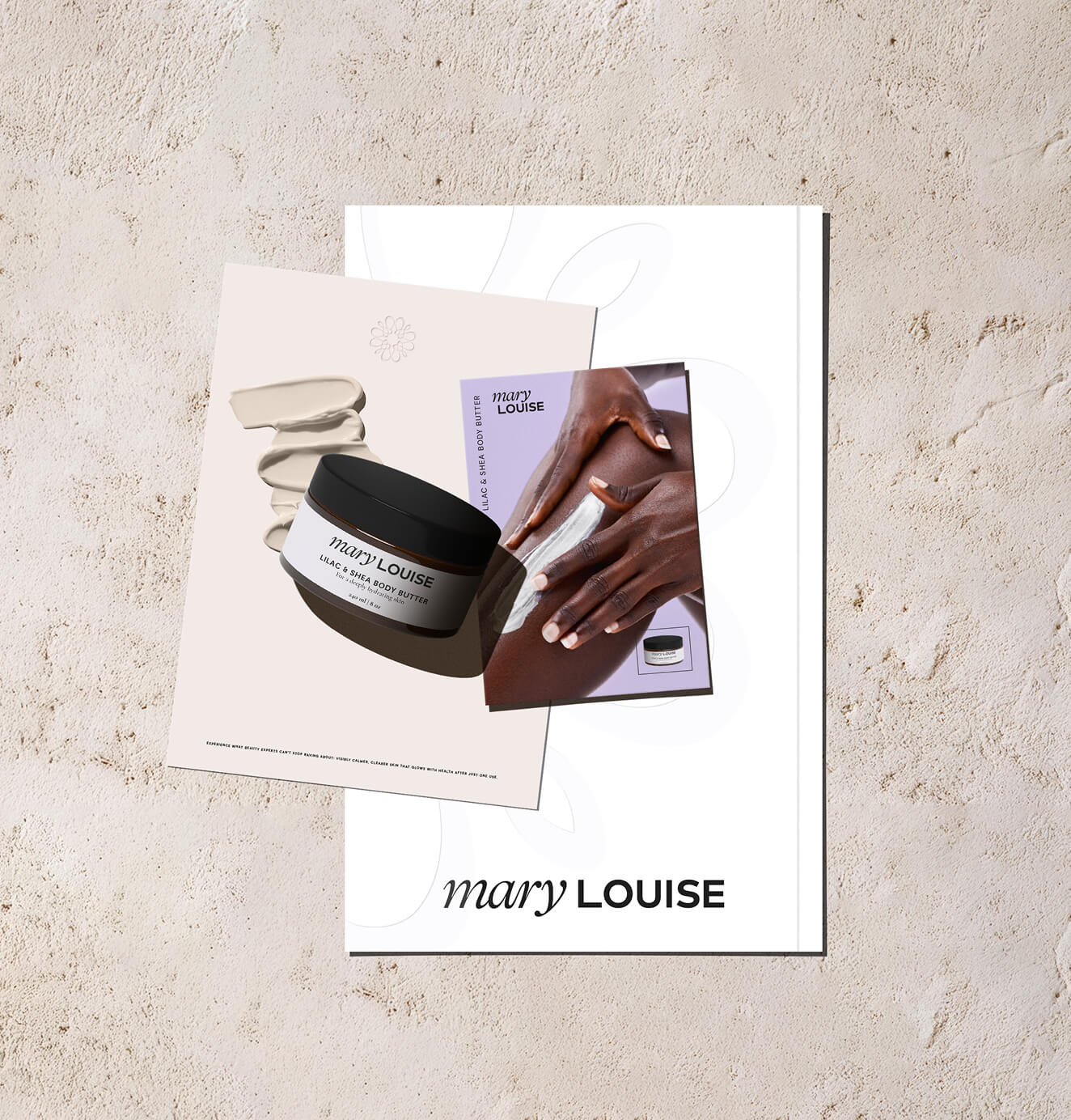





+91%Increase in conversion rate
+46%Increase in AOV


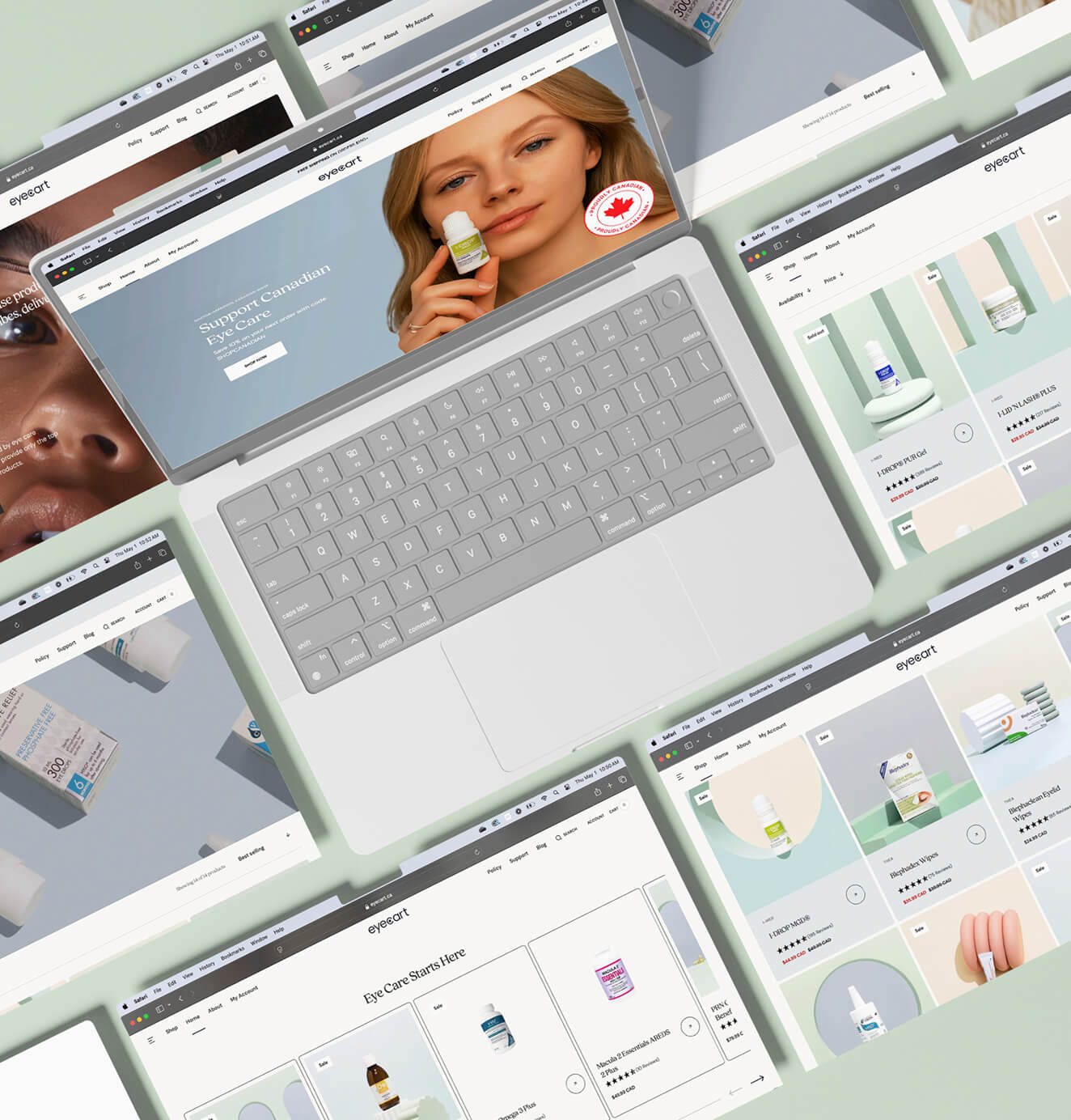





+200%Increase in conversion rate
+688%Increase in attributed revenue












